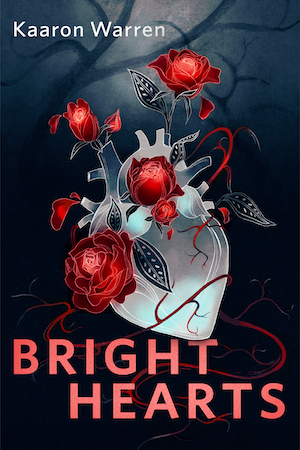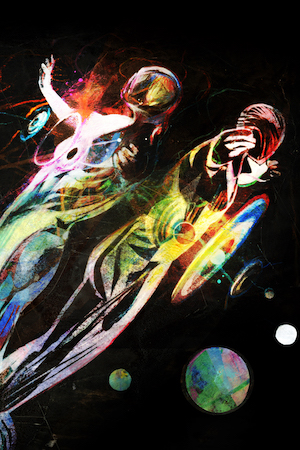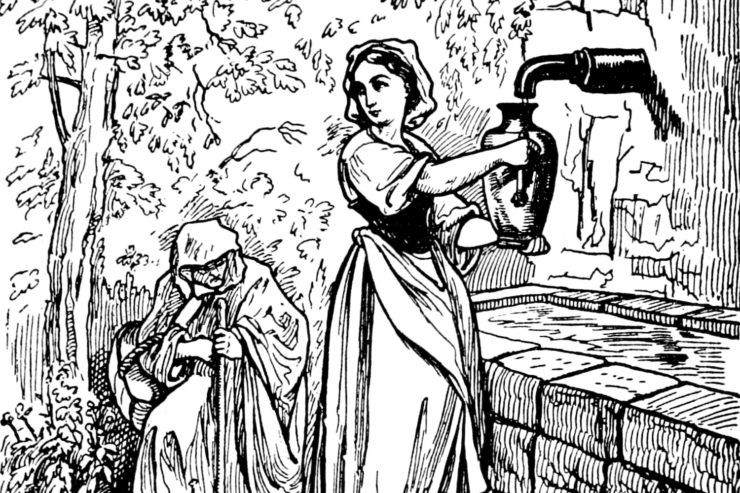“Diamonds and Toads,” sometimes titled simply “The Fairies,” is a French fairy tale about how a single moment can change your life forever. Two sisters, one kind and one cruel, are each given a similar moment to prove their worth, and their own natures play the greatest part in their fates.
In case you aren’t familiar with this particular story, here’s my quick and dirty retelling:
An ornery widow lives with her two daughters. The eldest is as disagreeable as her mother and is also the mother’s favorite, due to their similar natures. The younger daughter is sweet-tempered and naturally kind, and the mother can’t stand this. Both the elder sister and the mother treat the younger sister with contempt, but she continues to be cheerful and considerate.
One day, the mother sends the younger daughter to the well to fetch water, and while there, the girl meets a poor old woman who asks her for a drink. Naturally, the young woman obliges, and the old woman turns out to be a fairy who gives her a gift: every time she speaks, flowers or precious jewels fall from her lips. The girl returns home to tell her family everything that happened, and of course they believe her due to the pile of flowery, glittery evidence that grows with every word.
The mother decides that her older, favorite daughter should also be given this gift, so she sends her to the well in place of her sister. The older daughter is angry about having to do this extra chore, so when she meets a beautiful, richly dressed woman at the well, she insults the fairy instead of offering her a drink. The fairy decides to punish the elder sister: every time she speaks, toads and snakes and insects fall from her lips.
The elder sister returns home and tells her tale, or at least tells some of it before her mother insists that she stop speaking. (At least, not in the house.) Nobody is very happy about the way things are going, and in a fury, the mother drives the younger daughter from the house. While she’s hiding in the woods, a prince happens to find her, and when she tells him her sad tale, he falls in love with the beautiful young woman. (Or at least, he falls for the jewels dropping from her lips.) He marries her and they live happily ever after.
Meanwhile the widow and the elder sister can’t take much comfort from each other, and they die alone and unhappy.
Charles Perrault certainly seemed to think it was a straightforward matter: reward the good and punish the wicked. But modern authors have torn that simple premise to bits and reconstructed it in new ways that bring the nature vs. nurture debate into the mix, or that show that gifts aren’t always what they seem, or that it’s what you do over the course of your life, rather than in a single moment, that matters in the long run.
“Diamonds and Toads” by Daniel M. Lavery
Although Lavery’s retelling starts out very similarly to the original, with the sweet sister going to the well and being blessed by the fairy, there’s plenty of biting commentary in the prose which gives the reader a slantwise view on these familiar characters. Is someone’s kindness really admirable if it’s no effort for them to be kind? When the elder sister reaches the well and the fairy reappears as a beautiful woman, she reacts honestly, and when she requests that the fairy change her words so that she comes across as a kinder person, it seems that perhaps all will be well. Fairies, though, are apparently also somewhat disagreeable, so in the end, everyone’s nature does seem to play the main role in determining their fortunes.
“The Fairy’s Mistake” by Gail Carson Levine
Best known for Ella Enchanted, her wonderful retelling of Cinderella in which a fairy godmother’s ill-chosen gift of obedience causes endless problems for the protagonist, Levine revisits the same fairy-saturated world in this tale (the first story in a collection of the same name). Fairy Ethelinda gives out another problematic set of curses/blessings to two young sisters, Rosella and Myrtle. When Rosella, now dropping precious and semi-precious jewels from her mouth with every word, is swept up by a prince who encourages her to talk but never listens to a word she says, and Myrtle, with insects and snakes coming from her lips, threatens the local villagers into giving her whatever she wants or else she’ll fill their shops and homes with pests, Ethelinda realizes she’s gone about things all wrong, and will either have to find a way to sort things out or swear off giving fairy gifts forever.
“Precious” by Nalo Hopkinson, from Silver Birch, Blood Moon edited by Ellen Datlow and Terri Windling
More of a follow-up to the original story than a retelling, in this version, Isobel now lives with her husband, Jude, who rescued her from her stepmother when he realized that every time she made a sound, something precious fell from her lips. But between drinking and gambling, he always needs more money, more jewels, more treasure. Isobel runs away, but continues to send money to her stepmother and stepsister, who live on a farm where they can keep her stepsister (and her curse) hidden from the world. When Jude finds her again, Isobel has to learn to speak up for herself regardless of what comes out of her mouth.
“Three Dwarves and 2000 Maniacs” by Don Webb, from Black Swan, White Raven edited by Ellen Datlow and Terri Windling
This tale blends several fairy tales and flirts a little bit with the ending of “The Goose Girl,” but most of the narrative comes from “Diamonds and Toads.” Alfred is a psychiatrist who has synthesized a drug that cures patients of their hallucinations. Now very successful, he begins tracking down his old classmates, and hears about beautiful Susan, who he always had a crush on. One of his other friends tells him the remarkably strange tale of her father’s remarriage, and how her stepsister inheriting all his worldly possessions when he passed away, leaving Susan penniless with nowhere to go. Alfred tracks down Susan and finds her surprisingly wealthy, and she tells him more of the story, and how she became blessed by three dwarves who admired her attitude toward life. Of course, we find that her stepsister was not so lucky when she tried for the same blessing, and it has fostered some resentment in the time since. Cheeky and full of humor, with a clear affection for the horrific side of folklore and modern horror culture, Webb’s bizarre blend of elements is more than the sum of its parts.
“Toad-Rich” by Michael Cadnum, from Silver Birch, Blood Moon edited by Ellen Datlow and Terri Windling
One of the darker retellings I’ve come across, this is told from the “wicked” sister’s point of view. Becky always has to watch out for her pretty but simple sister Lydia. When Lydia returns from fetching water, speaking jewels and telling a wild story about running into a stranger, Becky sets out for the well—not to seek her own blessing but because Lydia forgot the water. Becky has a cutthroat view of the world and when she curses at a stranger and starts speaking in toads, she strangles the fairy and becomes stuck with the condition. However, she’s determined to keep talking, especially when some of the creatures that fall from her lips are rare and beautiful, and she finds a thriving market for exotic insects. Although Becky doesn’t have anything nice to say about Lydia, it’s clear that she cares for her sister more than just about anything else in the world, and when a life at court turns out to be a misery, Becky sets plans in motion to rescue her.
Toads and Diamonds by Heather Tomlinson
This YA retelling is gloriously rich and beautiful, highlighting the sisters’ relationship and the unexpected benefits and pitfalls below the surface of their seemingly straightforward gifts. Alternating viewpoints, the chapters switch back and forth between each sister and the fallout and consequences of her respective gift. Diribani is whisked away to a life at court and prospective marriage to a prince, while Tana uses her gift to replenish the local snake population, which has been devastated by an invading ruler who doesn’t understand the snakes’ importance in hunting household pests. This lyrical novel has enough space to give the sisters’ relationship depth and nuance without making them enemies.
Which versions of this particular tale are your favorites?










